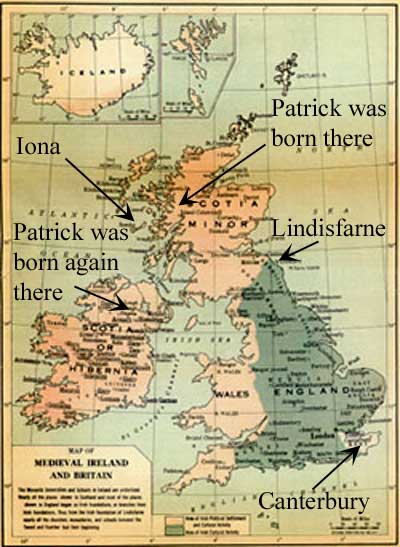Expanded
Map of Scotia Major and Minor
The writing on the lower left says:
Bright shaded areas represents Irish Political Settlement and Cultural Activity. Dark areas represent Irish Cultural Activity. At the Fall of Rome (476 A.D.) fierce pagan Anglo-Saxon pirates and terrorists invaded the country which is now called England. The monks from Rome led by Augustine (597 A.D.) waited until the Irish had Christianized and civilized them before even venturing to convert them to Romanism. The Archbishop of Canterbury is still head of the "church" of England which is little more than the "church" of Rome with the Queen as head. Henry VIII was given the title: Defender of the "faith" by the Pope for writing a diatribe against Martin Luther. Henry was much better at marrying and beheading than writing . . . his missive was the laughing stock of Europe and he quickly quit his writing career. This Unscriptural title of "defenders" of the Roman "faith" is still retained by the English monarchs to this day:
Lindisfarne was the headquarters of St. Aidan who evangelized the fierce Anglo-Saxon pagans. Iona was the headquarters of St. Columba who converted the Picts or Caledonians to Christ. In 1066, the Viking/Norman invasion finished the job of making slaves of the English until the Reformation liberated the common people from serfdom. Editor's Note The only surviving history of this period was written by the "Venerable" Bede who wrote a history entitled: Ecclesiastical History of the English People, in the year 731. Bede was an Anglo-Saxon Roman Catholic and a Benedictine monk. He never once mentioned St. Patrick in his History. That is like writing a history of the Roman Empire and never mentioning Christianity!! |
